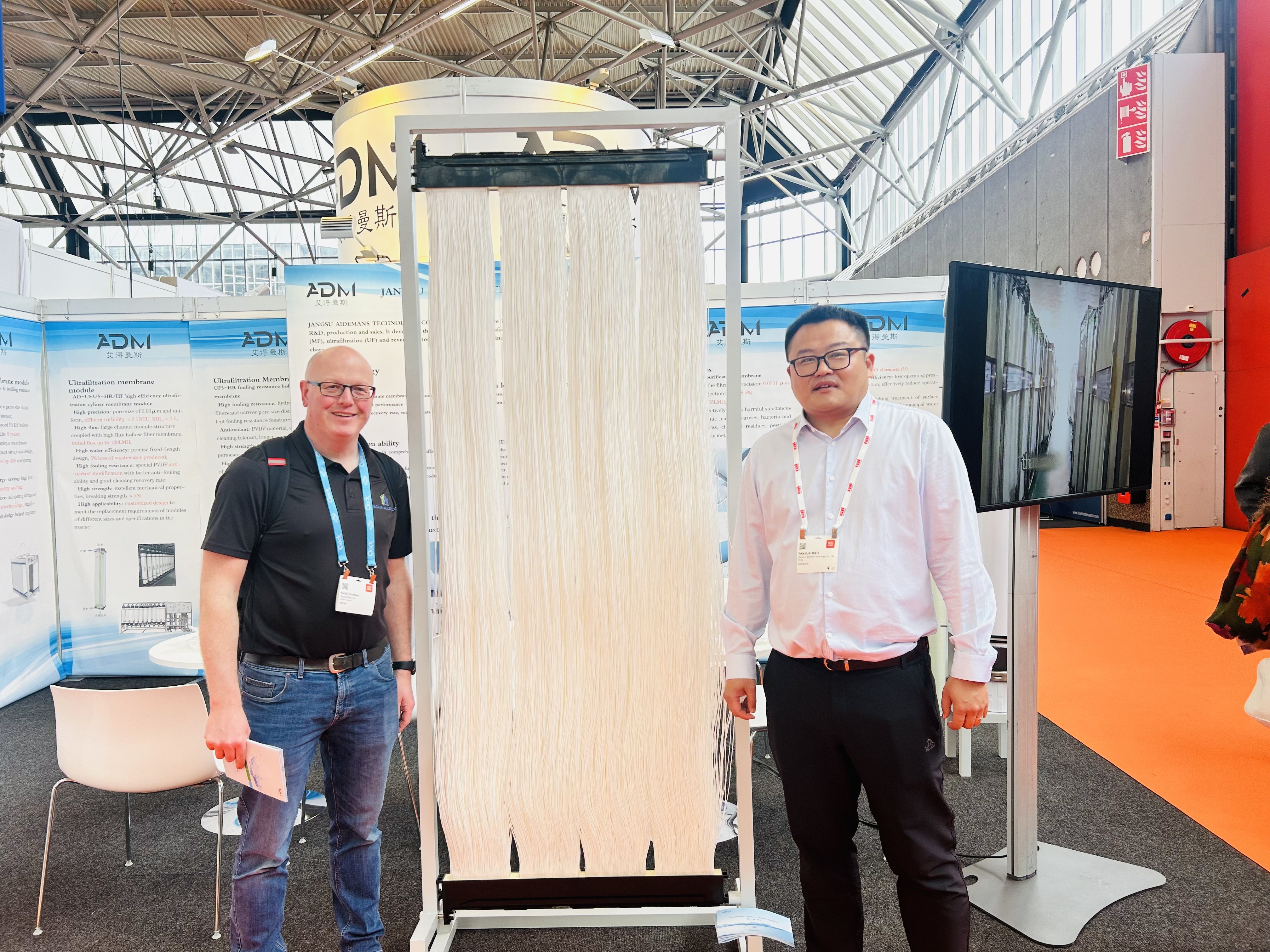Microfiltration Membrane Module Spots
Release time:
2025-08-14
Recent technological advancements have significantly enhanced microfiltration capabilities. Novel membrane materials with engineered surface properties demonstrate improved resistance to fouling while maintaining high permeability. System designs have evolved to incorporate more efficient module configurations and cleaning protocols, reducing downtime and operational costs. Perhaps most significantly, the integration of smart monitoring systems allows for real-time performance tracking and predictive maintenance, transforming microfiltration from a passive filtration method to an intelligent separation process.

Operating Conditions
| Name | Unit | Specification | |
| Model | AD-MFI-B | ||
| Membrane Area | m² | 11/17/22 | |
| Material | Hollow Fiber Membrane | -- | PVDF+PET |
| Sealant Resin | -- | Polyurethane Resin | |
| Support Rod | -- | None | |
| Membrane Box Material | -- | ABS | |
| Membrane Fiber Inner and Outer Diameter | mm | 1.0/2.0 | |
| Membrane Fiber Pore Size | micrometer | 0.1 | |
| Water Turbidity | NTU | <1 | |
| Size | mm | 535*45*1055/1555/2055 | |
| Effective Length of Membrane Fiber | mm | 925/1425/1925 | |
| Name | Unit | Range |
| Operating Temperature | ℃ | 6-35 |
| Operating pH | -- | 6-9 |
| Acid-Base Resistance | -- | pH2-12 |
| Design Flux | L/m² ·h | 15-30 |
| Operating Mode | Negative Pressure Suction | |
| Maximum Transmembrane Pressure Difference | kPa | 45 |
| Gas-Water Ratio | (3-8):1 | |
| Influent Animal and Vegetable Oil | mg/L | <50 |
| Influent Mineral Oil | mg/L | <3 |
| Recommended Sludge Concentration (MLSS) | mg/L | 5000-12000 |
[ Note ]: The specific operating mode should be set according to the characteristics of the influent water quality and operating conditions.
Recent technological advancements have significantly enhanced microfiltration capabilities. Novel membrane materials with engineered surface properties demonstrate improved resistance to fouling while maintaining high permeability. System designs have evolved to incorporate more efficient module configurations and cleaning protocols, reducing downtime and operational costs. Perhaps most significantly, the integration of smart monitoring systems allows for real-time performance tracking and predictive maintenance, transforming microfiltration from a passive filtration method to an intelligent separation process.
The economic advantages of microfiltration become particularly apparent when examining total cost of ownership. While initial capital investment may exceed conventional filtration systems, the long-term savings in energy consumption, chemical usage, and maintenance costs create compelling financial justification. Many industrial users report significant reductions in operating expenses after transitioning to microfiltration systems, with additional benefits coming from improved product quality and consistency. The technology's modular nature further enhances its economic appeal, allowing for scalable implementations that can grow with processing needs.
Environmental considerations increasingly favor microfiltration over traditional separation methods. The technology's minimal chemical requirements and low energy consumption align with global sustainability initiatives, while its ability to facilitate water reuse addresses growing concerns about water scarcity. In industrial wastewater treatment, microfiltration systems demonstrate particular effectiveness at removing challenging contaminants while producing effluent suitable for recycling, helping operations reduce their environmental footprint and comply with increasingly stringent regulations.
Looking toward future developments, microfiltration technology appears poised for continued evolution. Research focuses on creating membranes with even greater selectivity and durability, potentially expanding applications into new industrial sectors. The integration of advanced materials science with membrane technology promises breakthroughs in performance characteristics, while digital transformation initiatives are creating smarter, more responsive filtration systems. These advancements suggest that microfiltration will continue to play a vital role in industrial separation processes while finding new applications in emerging fields such as biofuel production and advanced materials manufacturing.
The widespread adoption of microfiltration membrane modules across diverse industries underscores their fundamental value in modern processing systems. From ensuring safe drinking water to enabling innovative pharmaceutical production techniques, these systems have proven their reliability and effectiveness. As global challenges related to water quality, industrial sustainability, and product safety intensify, microfiltration technology stands ready to provide solutions that balance technical performance with economic and environmental considerations. The ongoing refinement of membrane materials and system designs promises to further enhance these capabilities, ensuring microfiltration remains at the forefront of separation technology for years to come.
Previous Page:
: Next Page

